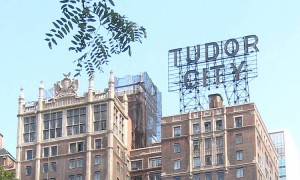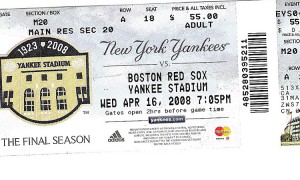If you travel around the world, one interesting thing you’ll discover is that when you tell people that you live in New York City, they often assume you’re talking about Times Square. The iconic giant electronic billboards, world-famous Theater District, New Year’s Rockin’ Eve, and round-the-clock energy have come to symbolize the real NYC to people who don’t actually live here. Movies and plays like 42nd Street, A Chorus Line, and Vanilla Sky have practically made the area a living, breathing character, so it’s easy to see why it’s the most identifiable and most visited part of the city.
It’s one of the most transformed parts of the city, too: Gone is the grit of the Midnight Cowboy–era Times Square, replaced by a district where families can safely hang out at night. While some lament the area’s “Disneyfication,” others celebrate its revitalization. And increasingly, it’s becoming a place NYC residents are calling home. While traditionally known as a heavily commercial area, it’s seen a 15 percent increase in residential households over the past decade. If you’re thinking of dipping your toe into the Times Square real estate wading pool, consider the pros and cons of living there.
Pros
Luxury living: People moving here will have their pick of some of the most glamorous residential options in the city. Many of the residential options in the area are geared toward people who are extremely busy with their careers and who demand the best. Amenities such as 24-hour doormen and fully equipped gyms are par for the course here.
Easy transport: Times Square is easily the most visited part of the city, with over 300 thousand people passing through daily and almost 40 million annually, and transportation into and out of the area is plentiful. Nearly every train line in the city passes along 42nd Street from east to west, with the S and 7 trains making transferring to other train lines easy. In additional to the subway, buses and cabs are beyond plentiful here.
Cons
Too many people: Of course, tourism is vital to the local economy, and the city would have an impossible time trying to survive without them and the businesses that call the area home. But when you have literal hordes of people walking around in what amounts to your front yard, it can be a bit overwhelming, especially when it’s groups of wide-eyed sightseers shuffling along the sidewalks. Again, it’s understandable — that Toys”R”Us Ferris wheel is really something — but when you’re trying to get to work or your apartment, wading through the throngs can be downright maddening.
Too expensive: A bottle of water that normally costs one dollar elsewhere can cost three times that in Times Square. Hot dog vendors can charge you $3 for a simple frank. Retailers tend to price things higher in this area in order to cover their own increasing costs. While these are one-off situations for visitors, they’re year-round issues for residents. Luckily, more reasonable prices for things like groceries are simply a subway ride (or a FreshDirect online order) away. Apartments are expensive here, too — but Times Square is one of those places where you get what you pay for.
Image Source: Flickr/Joey Lax-Salinas
[cf]skyword_tracking_tag[/cf]







[…] post Living Near Times Square: Pros and Cons appeared first on Coldwell Banker Blue […]
[…] people think of Times Square as being home to nothing but theaters and theme stores, but plenty of people actually live here. Within easy walking distance to the Diamond District, the Times Square residential area is a great […]
[…] people think of Times Square as being home to nothing but theaters and theme stores, but plenty of people actually live here. Within easy walking distance to the Diamond District, the Times Square residential area is a great […]
[…] people think of Times Square as being home to nothing but theaters and theme stores, but plenty of people actually live here. Within easy walking distance to the Diamond District, the Times Square residential area is a great […]
How does it work for those people that live near Times Square on New Year’s Eve? Can they hear it from their apartment and how do they get home with all those people? Do they have to buy a ticket just to go home and possibly listen to it from their apartment?